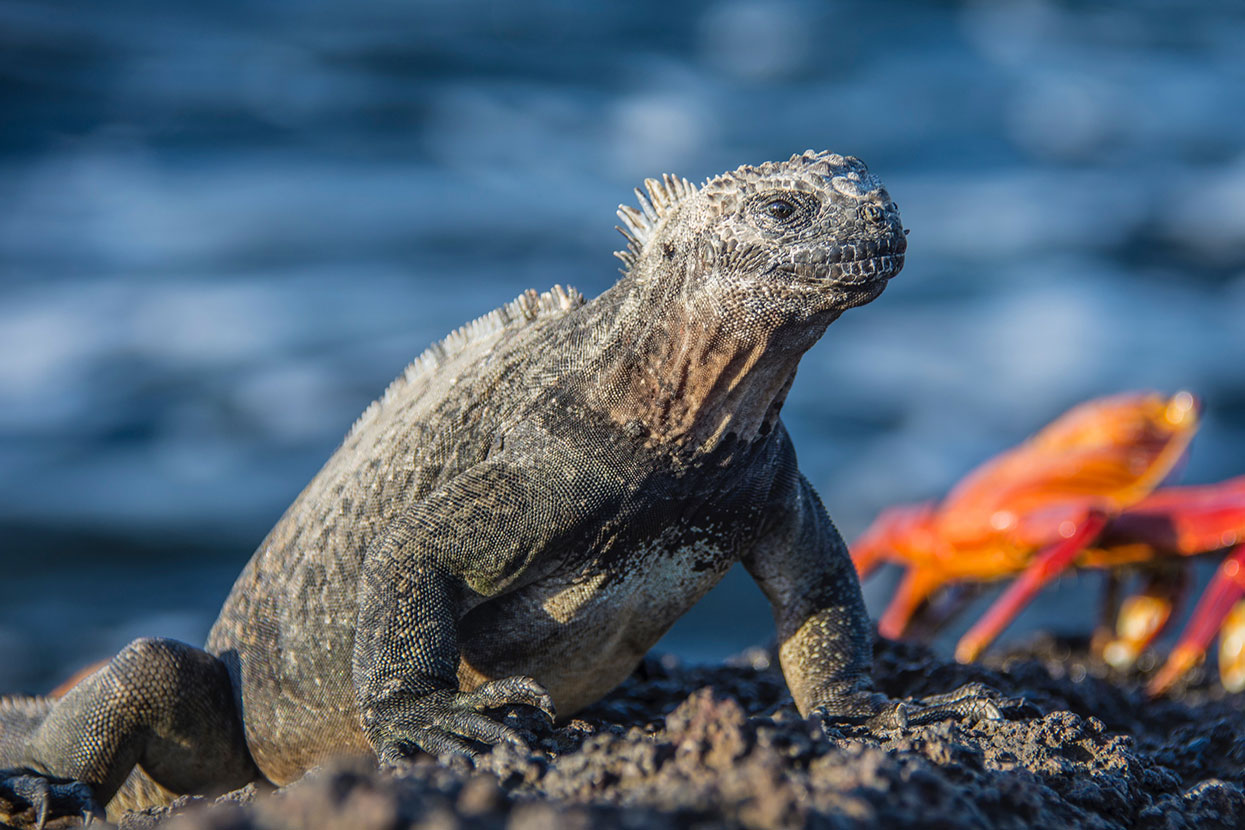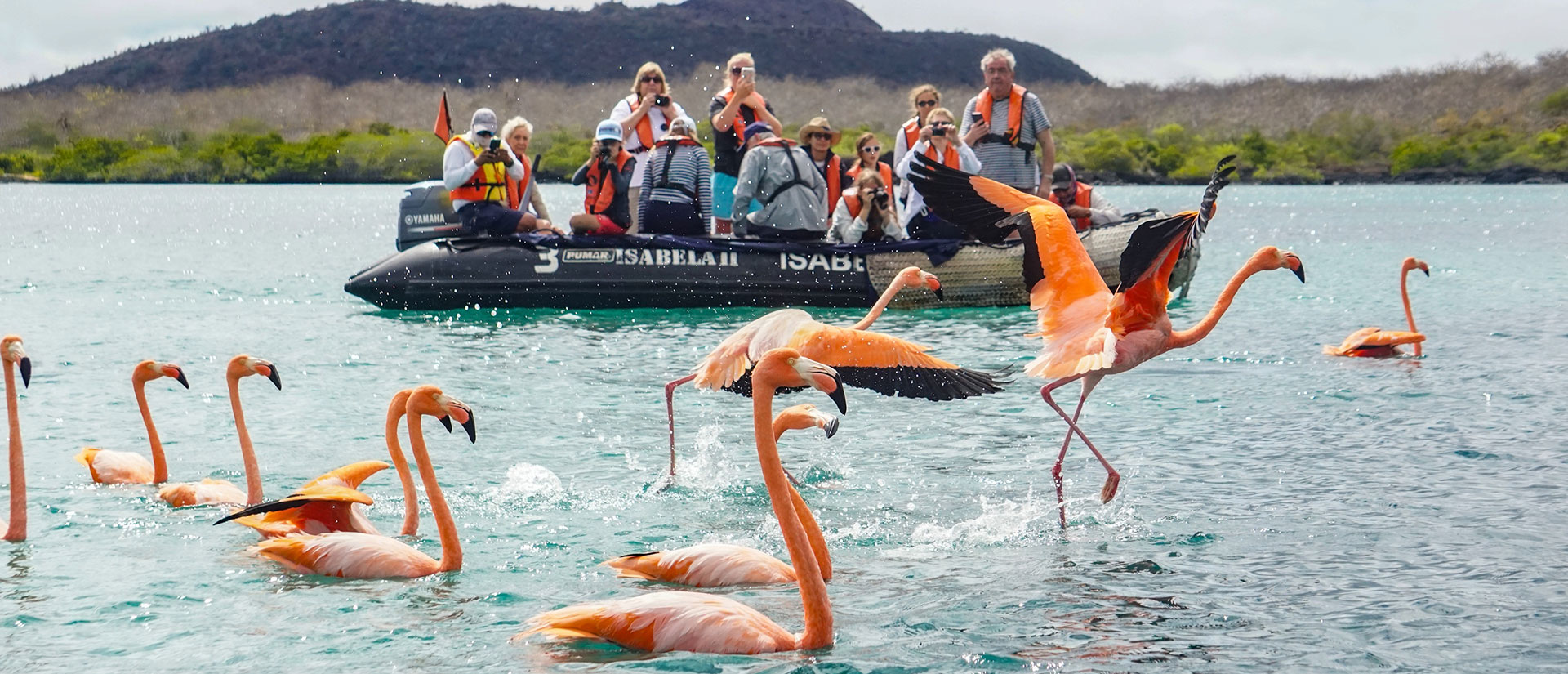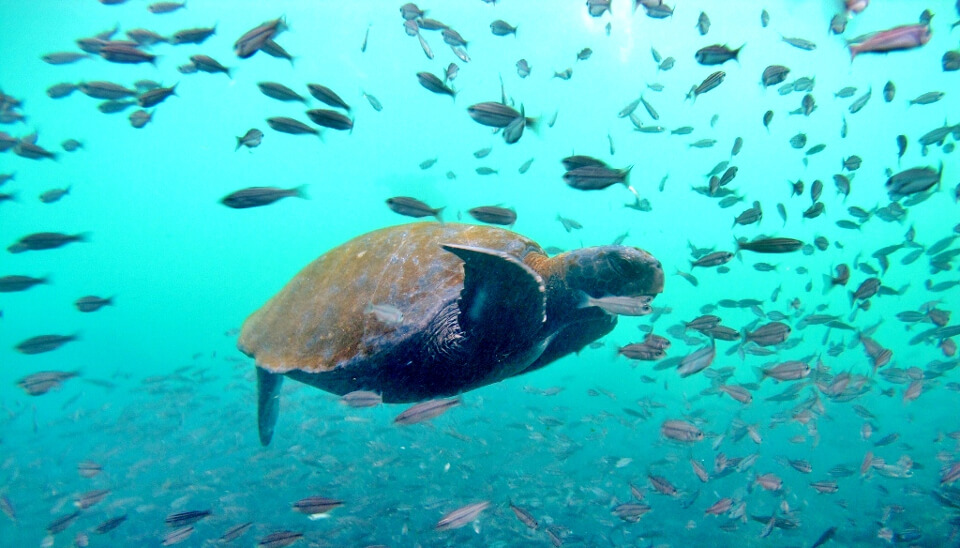
Although Charles Darwin first felt marine iguanas were somewhat unattractive and referred to them as “imps of darkness,” the only marine iguanas in the world are actually gorgeous creatures. Even if one’s definition of beauty is subjective, these species have undergone some incredible evolutionary adaptations. An amazing illustration of life’s adaptability is how they altered their appearance and behavior to thrive in the hostile Galapagos Islands!
Size and color variations in marine iguanas are related to the island they inhabit. These little differences, although being extensively noticed throughout the archipelago, identify the island on which they are located. Only the Northern Isabela Islands and Fernandina Islands are home to the biggest marine iguanas. The plants with the greatest color are found in Floreana and Española. Genovesa is home to the tiniest and blackest marine iguanas.

The World’S Only Marine Iguanas Are Found On The Galapagos Islands
When adjusting to their new surroundings, marine iguanas all experienced identical alterations, despite variations in size and color. For instance, because they feed on saltwater algae, they evolved specialized cranial exocrine glands that enable them to eliminate extra salt from their bodies. Their faces seem lighter in color as a result of the salt being discharged through a kind of sneeze that keeps the salt encrusted on them. It’s likely that you will catch them midsneeze at some point, as they need to sneeze many times a day to clear their system of excess salt.

The White-Snouted Marine Iguana
They may warm up more quickly on stony coasts after coming from the relatively cooler sea, which is why they are typically spotted all around the archipelago. On rare occasions, mangrove beaches and wetlands are also home to them. You will have several opportunities to witness these stunning imps swimming, sunbathing, or even sneezing via any of the three incredible itineraries offered by the magnificent Yacht Isabela II. Take it from your Big 15 list immediately! The world’s only marine iguanas have finally been seen by you!
From island to island, marine iguanas’ dark coloring varies somewhat. On Española, they can occasionally be somewhat redder, and on Santiago, slightly greener. However, they are all nearly black in color and have a dark gray color that helps them heat up more quickly after being in the chilly currents.
Their small faces are not particularly lovely in a typical sense, so don’t be surprised by them. These fascinating reptiles are amiable herbivores who mostly eat algae and seaweed for food. Using their small snouts to scrape food off the jagged lava rocks, they cling to them with the help of their powerful and strong claws.
Additionally, their bodies changed to improve their swimming. They can dive more easily because of their larger and more compact front limbs and flattened tails, which act as a counterbalance. A marine iguana’s maximum depth of diving is nine meters.
The Galapagos Islands: How Were They Reached by Marine Iguana?
Scientific consensus generally holds that the marine and terrestrial iguanas are members of the same species. These early examples must have come to the developing archipelago via rafting, floating on logs, or by some other means of propulsion. About 8 million years ago, the marine iguana split off from its terrestrial relative to become a distinct species.
Galapagos Marine Iguanas are a sight to behold.




